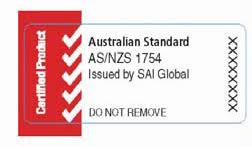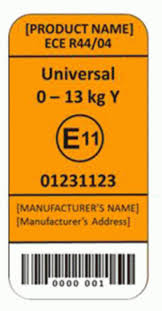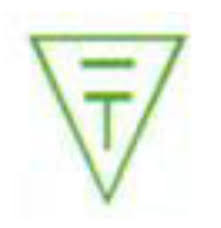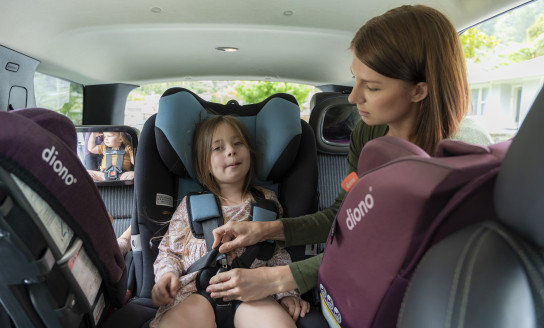Safety standards for child restraints
All child restraints sold in New Zealand must meet an approved standard.
This ensures the design and construction of the restraint are tested under crash conditions in a lab and provide the best protection when they’re used according to the manufacturer's instructions.
Look for a child restraint that shows:
|
Standard |
Look for this symbol |
|
A tick mark (indicates the restraint meets the joint New Zealand/Australian Standard AS/NZ 1754) |
 |
|
An 'E' mark (indicates the restraint meets the European Standard ECE 44 or ECE 129) – the number on the circle will vary depending on the country of certification. |
 |
|
Or, look for a restraint that complies with the United States Standard FMVSS 213. The restraint must also show the New Zealand Standard 'S' mark indicating it is certified for use here. |
 |
|
Some imported Japanese vehicles have in-built child restraints in the rear seats. If you have one of these child restraints in your vehicle, and the vehicle was brought in to New Zealand after 27 February 2005, the child restraint will have been checked and will be safe to use. If the vehicle was first registered in New Zealand before 27 February 2005, you should get the child restraint checked by an agent of the NZTA to make sure it’s safe. |
 |
Read more about child restraint requirements
Hiring or buying child restraints
If you’re looking to hire or buy a car seat, there are lots of things you need to think about.
To give your child the best protection when travelling, the restraint must:
- fit the vehicle correctly, according to the manufacturer’s instructions
- be right for your child with the child placed correctly in the restraint
- meet an approved standard. You can buy child restraints from specialist stores and other retailers. The Warehouse also stocks a range of Pick Me Help Plunket child restraints.
You can hire car seats from local community groups, health providers and retailers like Baby on the Move and Baby Factory. To find out what’s available in your area, search online. Please note, Plunket does not hire out car seats.
Getting the right fit
The child restraint needs to be right for your child.
It’s a good idea to get a car seat from a store that has experienced staff, or if you’re unsure what kind of child restraint you need, Plunket has a number of child restraint technicians who can help. Contact your Plunket injury prevention team for more information:
- Northern region (Auckland and Northland)
- Central Region (areas from Waikato to Wellington)
- Southern Region (all South Island).
Before you hire or buy
- Place your child in the child restraint, making sure you’re happy with the harness system, and that you can correctly fit it and adjust it as your child grows.
- Try the child restraint in your vehicle, as not all car seats are suitable for all vehicles, and it needs to be installed correctly. Look at the manufacturer’s instructions for installing it, and check your vehicle manual to understand what vehicle seat locations allow for a child restraint to be installed. You may need to know the location of tether anchor points, seat belt types and isofix points.
- If you’re looking at buying a convertible child restraint (a restraint that allows your child to be rear-facing, and then converts to a forward-facing car seat), try it in each direction to make sure it’ll fit okay in both.
Other certified child restraint technicians
Buying a second-hand child restraint
Be wary of buying or borrowing a second-hand child restraint. It may not always be obvious if it's been involved in an accident, parts may be missing, or it may not meet current safety standards.
If choosing to purchase or borrow second-hand, check:
- there’s an instruction manual, and that it’s for the correct make and model of child restraint - you may need to check the manufacturer’s website for any changes
- the restraint meets an approved standard for use in New Zealand
- the metal fittings have no signs of rust
- the webbing is free of any signs of fraying
- the webbing is free of any discoloration. Ultra-violet light can cause deterioration.
- the webbing is in good condition and free of any signs of wear where it passes over the metal fittings
- the covers are in good condition, and are either original or a manufacturer-approved replacement
- the buckle operates properly
- the restraint is within the manufacturer's recommended life expectancy
- the history of the restraint - has it been involved in a crash?
- whether the restraint been cleaned according to the manufacturer’s instructions - some of these instructions are very strict.
If in any doubt, don’t buy or use the restraint.
If buying over the internet, you need to know that you can return the restraint if it doesn't fit securely and correctly in your vehicle.
If you’re uncertain, ask a child restraint technician for advice.
